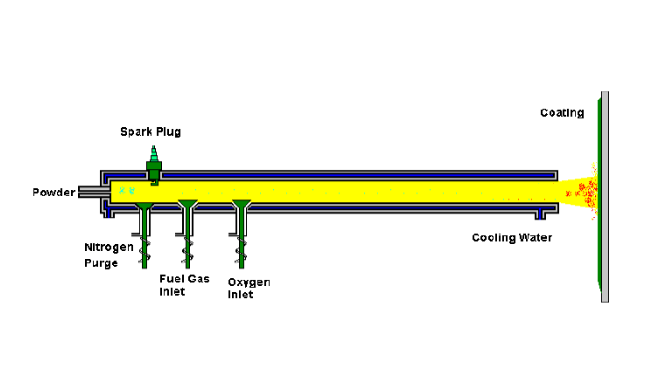What is Detonation Spraying?

Detonation Spraying is a method where powdered coating material, placed in a specially designed combustion chamber, is ignited with a combustible gas mixture (usually oxygen and acetylene). The resulting high heat and pressure cause the powder to melt and rapidly spray onto the product surface, forming a coating. One of the main features of Detonation Spraying is the high speed and kinetic energy of the sprayed particles. This results in a coating with strong adhesion to the substrate, excellent density, low porosity, and low roughness after processing. Detonation Spraying typically doesn’t require preheating or pre-treatment of the substrate, minimizing heat damage to the surface during spraying. Additionally, the coating thickness is easily controlled, and the process boasts high efficiency and low operational costs.
However, Detonation Spraying has its drawbacks, such as high noise levels, complex equipment, higher costs, potential oxidation of the substrate, and the risk of coating cracking and delamination due to different thermal expansion coefficients between the coating and the substrate.
Detonation Spraying can be applied to a wide range of materials, including tungsten carbide, chrome carbide, metallic alloys, ceramics, and cermets. It finds extensive applications in various fields, particularly in aerospace and aviation industries.
